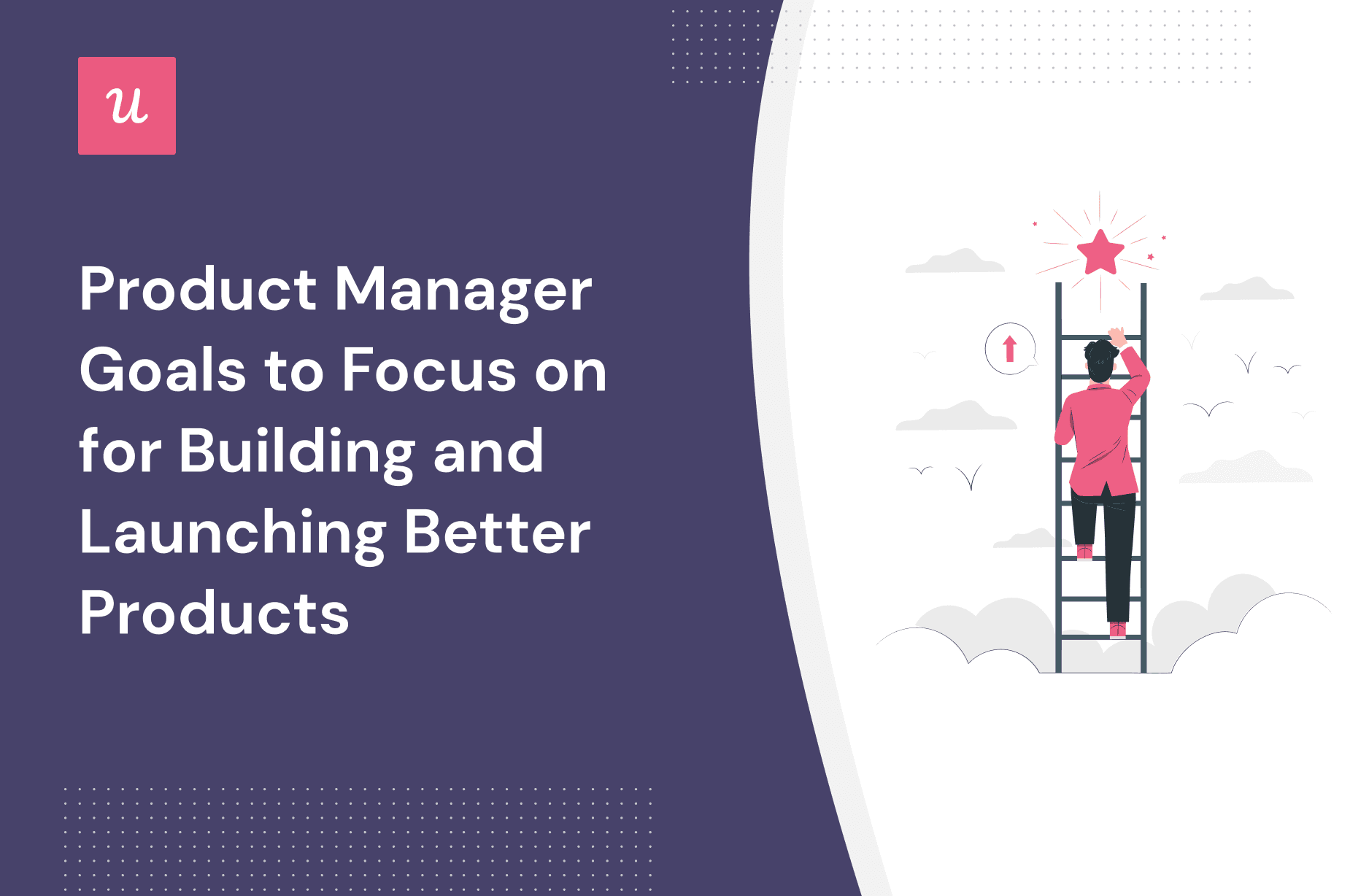
Try Userpilot Now
See Why 1,000+ Teams Choose Userpilot

What is product management?
Product management focuses on enabling and enhancing product development at all stages of its lifecycle.
The product management process consists of 7 main stages, starting from market and user research and ideation, and finishing with the MVP release. It is an ongoing and iterative process based on user constant feedback collection and incremental development.
What is a product manager?
The product manager’s job is to oversee and coordinate all aspects of the development process.
To achieve that, they lead interdisciplinary product teams which include researchers, designers, developers, analysts, marketers, and product ops professionals.
What is the product manager’s role?
The product manager role is a fairly complex one and requires a range of skills.
Product managers are responsible for the overall product vision and its alignment with the business objectives.
This means, that apart from leading the product team, which requires robust leadership as well as technical skills, a successful product manager needs great business acumen.
Such business sense together with brilliant communication skills and empathy, helps them navigate the corporate landscape, manage stakeholders and their often conflicting interests, and make sure that there is necessary support from the management.
Product manager vs product owner
Product owners perform some of the product manager responsibilities within the product team. They both act as the voice of the customer and help the team define the objectives based on the customer’s requirements and feedback.
However, the range of responsibilities of product managers is far greater.
They are more involved in the technical side of development as well as marketing and sales.
They also promote the product within the organization and try to influence the organizational climate to create the best conditions for the product to thrive.
Technically, the product owner is a Scrum role but many product teams prefer to use an eclectic mix of agile techniques and processes, rather than stick religiously to one framework.
That’s why you can find product owners also on non-Scrum teams.
How to set goals- frameworks for product managers
Let’s have a look at a few popular frameworks you can use to set goals.
SMART goals
The SMART framework is one of the most popular ways of goal-setting. It’s an acronym that stands for:
- S – specific – clear about what needs to be done
- M – measurable – easy to evaluable its achievement
- A – achievable – realistic
- R – relevant – with a specific purpose in the particular context
- T – time-bound – with a deadline or timeframe

An example of a SMART goal could be ‘generate 300 leads by the end of the first month of the campaign.’
OKR framework
Companies like Google or IBM use the Objectives and Key Results (OKR) framework for setting and tracking goals.
The Objectives are the goals that inspire and set the direction for the organization.
Key results are the steps towards the goals. They show the team whether they are progressing to the successful achievement of the objectives.
Finally, initiatives are the individual tasks that the teams need to complete to achieve the objectives.

Jobs to be done Framework
The Jobs To Be Done framework can also help product managers set goals.
The main principle of the framework is building features that allow users to complete specific jobs. Enabling that could be the overarching goal for the team.
Once it’s identified through market and customer research, the team works backward and breaks down the development process into specific milestones. These are the sub-goals to achieve.
Finally, they dissect them even further -into specific tasks whose completion will lead to the realization of the goal.

Product manager goals that will help you ship better products
So what goals should product managers set to build better products? Let’s look at a few examples.
Note though, that these aren’t product management KPIs but rather outcomes, that is the results of improvements to the product management processes.
Increase customer satisfaction
Improving customer satisfaction should really be the objective of all product teams because it directly translates into reduced churn and higher retention rates.
How to achieve the goal: Collect specific feedback in-app
One way to increase customer satisfaction is by collecting user feedback – and acting on it.
The most reliable way to collect feedback is through in-app surveys. You want these to be as specific as possible to identify the friction points. The modal from Jira is a good example of a survey about a specific feature.

It tests the overall satisfaction and includes a follow-up question to collect more detailed feedback. It is the qualitative feedback that could be particularly insightful.
Apart from contextual in-app surveys that are triggered when a user engages with a feature or completes a task, it’s good practice to collect passive feedback. This allows users to voice their opinion whenever they feel the need to do so.
Include more user feedback into the product strategy
Product managers should always use customer feedback to inform their product strategy because this allows them to avoid falling into the feature parity trap and develop features that customers need.
How to achieve the goal: Use fake door testing before adding features to the product roadmap
Fake door testing is a technique that allows you to validate a feature idea before it’s built and without almost any costs.
All you have to do is pretend that you have the feature and announce it to your users with a modal or tooltip like in the Buffer example below.
Of course, once the user clicks on the CTA button, you need to tell them the truth. However, by tracking engagement you can assess the potential interest in the feature.
It’s also a good way to recruit beta testers for when the feature is actually ready so that you can test it thoroughly before the release.

Increase activation rate
Improving activation should be one of the key product manager goals. Why? Activation is crucial for users to start obtaining value.
And no value means also no money for you. The activation rate is in fact the metric that has the biggest direct impact on the Monthly Recurring Revenue (MRR). A 25% increase translates into 34% increase in MRR in 12 months!
How to achieve the goal: Shorten time to value with minimum viable onboarding
The quickest way to boost activation and reduce the time to value is through minimum viable user onboarding. How does it work?
Basically, by developing personalized onboarding flows, you lead specific user segments to value in the quickest and most direct way.
To do that, you need to identify the activation points. Next, you segment your users based on the objectives. Finally, design a personalized flow guiding them through those activation points.
Tools like Userpilot allow you do that with a range of in-app guidance like interactive walkthroughs, checklists, or resource centers.

And to extend these capabilities to your mobile users, Userpilot’s native mobile SDK now enables you to create targeted onboarding flows using slideouts, carousels, and push notifications, all without writing extra code.
Increase new feature adoption rate
Feature adoption occurs when your users start using a feature regularly to obtain value. As such, the metric is a good indication of how useful the features are to the users. The higher the rate, the more valuable the feature.
The first step to high adoption rates is building features that users genuinely need – ones that solve their problems. That’s why it’s essential to use user research and feedback to shape feature development.
If you don’t, you will waste a lot of money and time developing features that provide no value, and building a bloated product with poor usability and possibly lots of technical debt.
How to achieve the goal: Announce new features in-app
Even if the new feature development was based on robust data, you still need to make sure your user discovers its value.
And this must start with decent feature announcements.
The easiest way to reach your active users is with in-app announcements like the modal below introducing a new Figma functionality.

Better products through product improvements and continuous discovery
As a product manager, you must be extremely intrinsically motivated to constantly improve your product. Otherwise, you wouldn’t be doing what you do.
However, innovation is driven also by necessity.
Your rivals are working very hard to steal your competitive advantage – and your clients.
The needs of the latter keep changing, and you need to stay on top of the changes to keep delivering value. If you don’t, you will soon be out of business.
How to achieve the goal: Use Teresa Torres Continous discovery framework
The need to constantly improve a product in response to market changes was recognized by Teresa Torres in her Continuous Discovery Framework.
In short, Teresa Torres believes that product discovery is not limited to the early stages of product development. On the contrary, it’s an ongoing process that never stops, even after the product is released.
The key tool in the framework is the Opportunity Solution Tree. It ensures alignment between the organizational objectives, the user needs we’re trying to satisfy, the solutions, and the experiments we use to test them.

Improve collaboration with internal stakeholders
Good collaboration and information sharing between teams are a must for a successful product management process.
First, good communication channels and processes allow you to obtain valuable insights into customers’ needs or pain points.
For example, your customer support team may have access to anecdotal data about it, so it’s essential they share it with other teams.
Second, it helps you maximize product success.
The development team or the engineering team may build a brilliant new feature, but it won’t be very successful if the marketing team doesn’t know about it in time to prepare release announcements, and the customer support team doesn’t have enough knowledge to help customers.
How to achieve the goal: Hold regular meetings and share data
Holding regular meetings is one way to make sure all team members are on the same page. Tools like Miro or Zoom enable dispersed teams to hold productive meetings where all team members can actively participate and share their ideas.
Using a product adoption tool, like Userpilot can enhance data sharing. It gives all team members access to the product usage data and customer feedback like NPS, so that they can use it as needed.

Conclusion
Effective goal setting is essential for product managers. After all, if you don’t know where you’re heading, you will end up going around in circles without clear focus.
If you would like to learn how Userpilot can help you collect user feedback, improve activation rates and feature adoption with onboarding flows, and improve access to data, book the demo!







